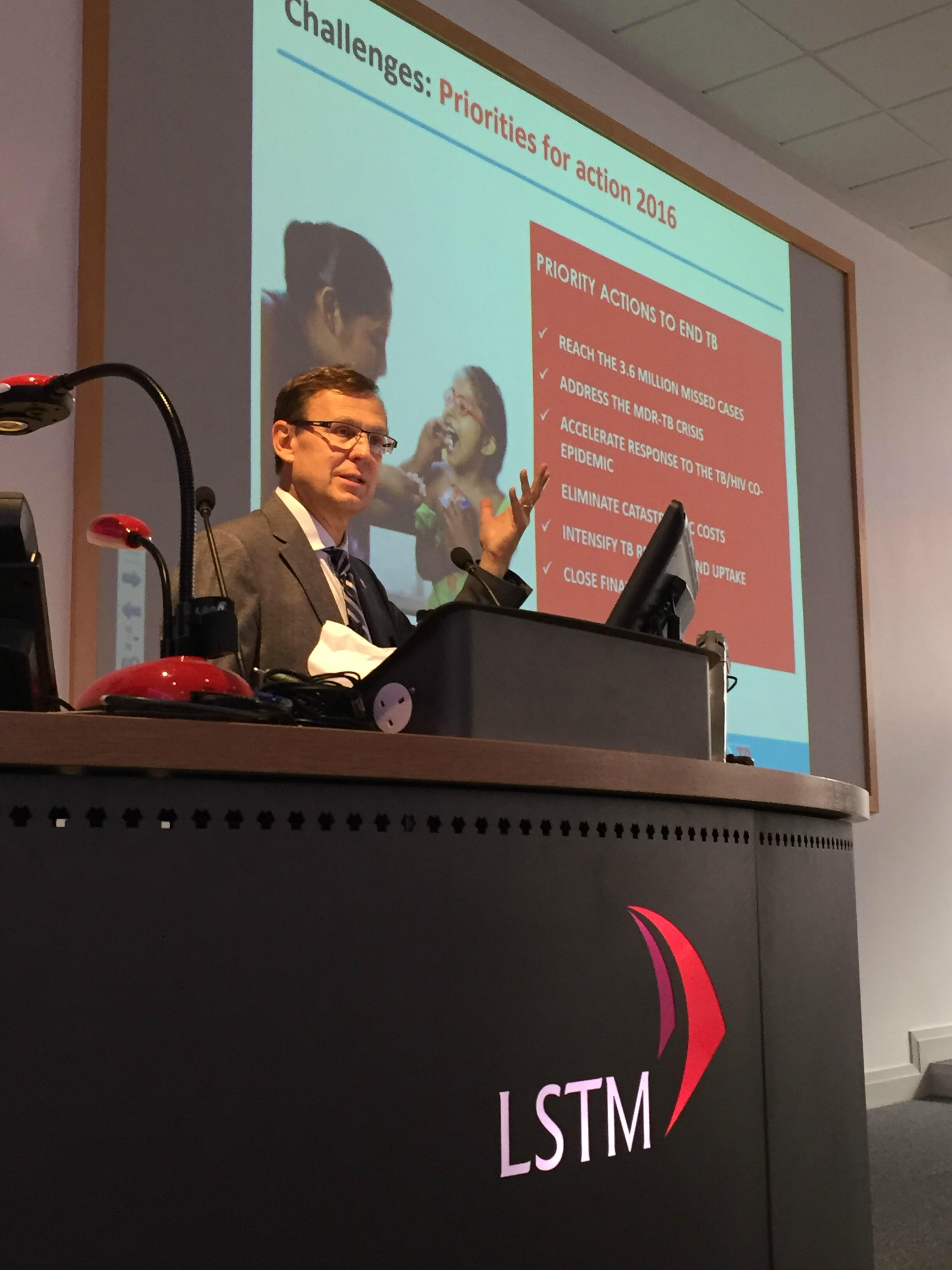
LSTM’s Seminar Series continued this week with a seminar by Dr Mario Raviglione, Director of the Global TB Programme for the World Health Organization (WHO). His talk entitled, Tuberculosis in 2016: burden, challenges, innovations – was introduced by LSTM’s Professor Bertie Squire and coincided with the opening of the 47th Union World Conference on Lung Health in Liverpool.
Dr Raviglione began by explaining the basics of tuberculosis (TB) which is one of the oldest human diseases. He explained that it was caused by a bacterium, usually affects the lungs but can also affect other organs in between 15 and 30% of cases. If treated properly susceptible strains are curable in most cases, but if left untreated it can prove fatal in around two in every three cases within five years. He spoke of multi drug resistant (MDR) TB requiring longer treatment, with more toxic and more expensive drugs and stated that around one third of the world’s population will have a latent, or dormant, TB infection. TB is airborne in transmission, although there are some cases of zoonotic TB, and around 10% of those infected will develop an active infection.
Looking at the WHO’s figures for 2015 Dr Raviglione stated that there were 10.4 million cases worldwide, with 1.8 million deaths during that time, meaning that TB is now the biggest killer among infectious diseases, and the leading cause of death among HIV sufferers. However HIV and malaria still receive nine times and twice as much funding as TB. While there are more cases per capita on the African continent, the highest burden of disease in actual numbers falls across India, Indonesia, China, Nigeria and Pakistan, countries mainly described as middle or higher income countries meaning that they do not qualify for international aid.
Dr Raviglione explained the change from Millennium Development Goals (MDGs), which ended in 2015 and in which TB was not even mentioned and the move towards the Sustainable Development Goals (SDGs) where TB is named in the title as a target. The related goals moved from the focus on developing countries and poverty reduction to universal improvement with economic, social and environmental pillars for sustainable development.
He highlighted the priorities that underpinned the End TB Strategy, such as a policy move towards universal health coverage, ensuring that missed cases are reached, high and catastrophic costs are eliminated and the issue of MDR-TB is addressed.
Dr Raviglione concluded by stressing that while the poorest and most vulnerable populations were the ones who carried the burden of TB, explaining the poverty – disease cycle, he called for more investment in research saying that funding around new diagnostics, drugs and vaccine development is essential.
As Dr Raviglione did not have time to outline his vision for future research, he has kindly made his full slide set available, including some concluding slides on future research direction (use download button on the right side of this page)